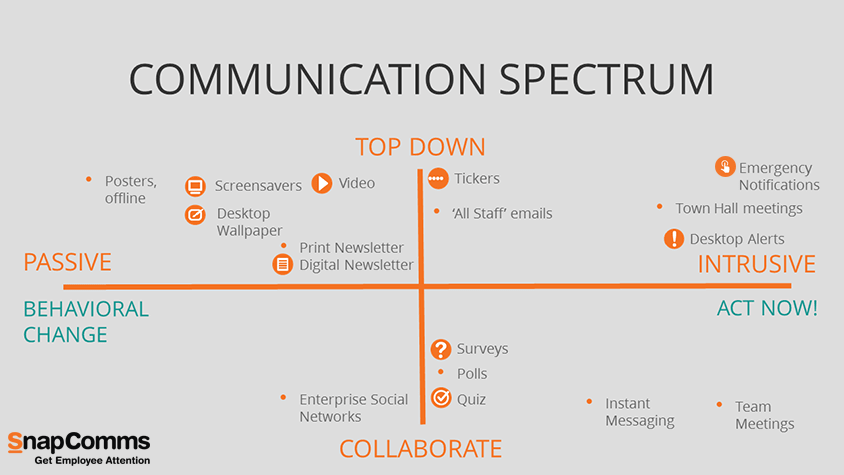For too long, internal communications departments have relied on email to connect with staff.
In 2018, email alone won’t cut it.
An analysis of internal email campaigns in 2016 found that the average open rate across all organizations was 66%. The click rate on links in those emails was only 10%.
What’s more alarming is that the healthcare industry had an email open rate of just 39% and a click rate of 6%.
Put simply, hospital employees no longer engage with email like they used to.
This was a realization by Wallowa Community Hospital, based in Oregon. Traditionally, email had been this rural hospital’s primary communication channel. But its information and technology services team was increasingly worried that staff were missing important alerts. They had concerns that a planned outage or time-sensitive announcement could be easily overlooked if employees did not have their email application open or in front of a computer.
John Straughan, Director of the hospital’s ITS team, explains: “People in small healthcare organizations, like ours, wear many hats. They’re extremely busy, often away from their desk, and can unwittingly miss an email.”
Straughan trialled a novel approach to staff communications using desktop alerts and tickers. These are direct-to-screen message formats that bypasses email completely.
Since introducing the new technology, Straughan says Wallowa’s hospital staff “really appreciate the prompt alerts. More end-users now see and receive our messages quicker than ever before. It makes things go that much smoother around here!”
The potential for usage is vast within a hospital setting: desktop alerts can be customized to include the organization’s branding, color-coded for specific types of hospital-code notifications, and highly targeted towards relevant staff.
Understand the communication spectrum
Before sending a communications message to staff it’s important to know the “severity” of the information. Is it passive or intrusive in nature?

For example, information-based or reminder messages (such as reinforcing the importance of hand hygiene) are best suited to a passive communication channel such as a newsletter, screensaver or printed posters.
These messages are designed to bring about long-term behavioral change.
However, if there is an active shooter on the hospital grounds or the hospital is going into lockdown, an intrusive communication channel, such as an emergency push notification, or full-screen desktop or mobile takeover, is more suitable.
Intrusive messages are designed to make staff act immediately, often in response to an urgent or emergency.
Information of moderate severity, such as reminders to take a break from the computer screen every two hours, require a less intrusive approach, such as a desktop “ticker”—an unobtrusive computer news feed that scrolls by in the background.
Understanding the communication spectrum is important for building an effective internal communications strategy. The inability to prioritize messages to suit the content has been the downfall of email – where everything gets the same treatment, bar adding the ‘high importance’ red flag!.
Using a variety of communication channels helps staff to understand the severity of the message; identify what requires their attention now; and how to respond. In other words, it helps them manage their working day better.
Track and measure staff response
In order to tackle the gulf of missed communications in hospitals, there must be data to show that communications are improving — or not.
Measuring the success of communications campaigns and strategies helps organizations to understand what’s working and what’s not.
Is the open and click through rate lower than required? If so, can the language be more persuasive? Is the call-to-action powerful enough?
Hospital communications departments and management can also track long-term behavioral change to measure the success of targeted campaigns.
The deeper organizations drill into the analytics, the more detailed the internal communications landscape becomes.
To summarize, hospitals are among the most diverse and complex organizations in the world. For internal communications to be effective, communication teams must be ready to adapt to more modern and cut-through communication tools now that email’s efficacy is diluted.
Susan Bowden is Marketing Manager at SnapComms, an award-winning company that develops employee communications software that bypasses e-mail to put important messages in front of employees on any device, anywhere. It has more than 1.5 million paid enterprise users in more than 75 countries.
The views, opinions and positions expressed within these guest posts are those of the author alone and do not represent those of Becker's Hospital Review/Becker's Healthcare. The accuracy, completeness and validity of any statements made within this article are not guaranteed. We accept no liability for any errors, omissions or representations. The copyright of this content belongs to the author and any liability with regards to infringement of intellectual property rights remains with them.